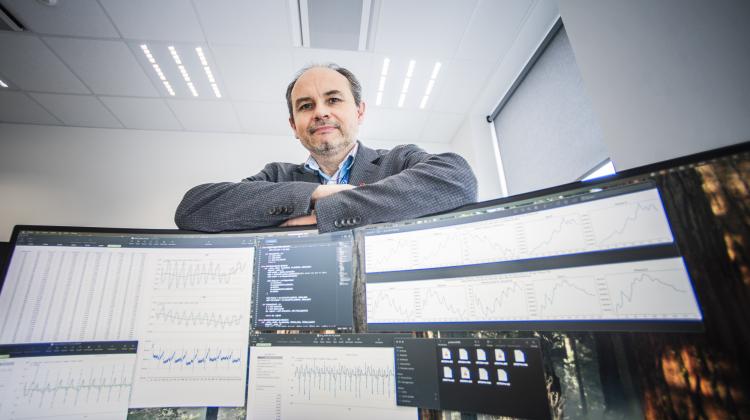Researchers from Lodz University of Technology, Medical University of Lodz, Bionanopark Sp. z o. o., and the staff of Pafana S.A. have been working on innovative implants - customized for patients after leg amputation. Prof. Bogdan Walkowiak from the Institute of Materials Science and Engineering, TUL, speaks about the project "Design and production of customized medical implants".
What problem affecting amputees have you been trying to tackle?
Transfemoral amputees are usually provided with a prosthesis mounted to the residual limb with a fitted prosthetic socket. This solution may appear optimal. The prosthetic socket is customized for each patient. Unfortunately, in a vast majority of cases it leads to significant problems because the skin of the stump comes into contact with the material of the prosthetic socket while soft tissues of the residuum that are not anatomically suited for the task bear the load. Consequently, the microbiological biofilm formed inside the socket and on the surface of the traumatized skin is the cause of numerous and long-lasting skin rashes, inflammation, and sores that make it difficult or downright impossible to use a prosthesis. To help solve this problem we decided to look into practical experiences concerning osseointegration (the connection between the living bone and load-bearing implant - ed.) of implants inserted into the medullary canal of the femur. Once osseointegrated with the femur, the implant can easily transfer the load resulting from the body weight directly to the prosthesis without the need for a prosthetic socket or soft tissue involvement, thus eliminating problems typically occurring with socket prostheses. Several hundred surgeries have been successfully performed owing to these solutions (OPRA and ITAP protocols). Unfortunately, the procedures are not available in Poland. Our solution, although in principle based on the experience with the two protocols, will to a much greater extent consider individual anatomical features of the patient. The tenth copy of the nineteenth version of the implant prototype is illustrated in the figure below.
When will patients be able to benefit from the results of the scientists' efforts?
Unfortunately, not everything is up to us, but we are making every effort to develop a final prototype of the implant by the end of 2020, including the process of surface modification and sterilization, and as a result, to design and produce five customized implants for five patients selected for the procedure of implant insertion within the ongoing project. Currently, prototypes of the implant are undergoing sterilization procedures and strength and fatigue tests. We anticipate that implants may be made of vanadium- and/or niobium-titanium alloys that have been medically approved. Where justified, implants may also be made from medical grade steel. I am hopeful that in 2021 the first patients will be able to benefit from our solution.
Who is engaged in the project?
Lodz University of Technology is the leader of the project (the Institute of Materials Science and Engineering, the Department of Strength of Materials and Structures and the Institute of Applied Radiation Chemistry), whereas the consortium includes Bionanopark sp. z o.o., Pafana S.A. and the Medical University of Lodz. As an interdisciplinary project, its success depends on good cooperation of all partners.
This is not the first implant project you have worked on. What made you interested in the problem of post-amputation patients?
We have experience in developing other customized implants. For example, implants for the reconstruction of fractured orbital bones (Orbitech®) or the skull (Craniotech®). We also prepare customized anatomical models to facilitate planning of surgical procedures. We welcome new challenges in this area. As for the lower limb implant, the story goes back to veterinary medicine. We made such an implant for a large dog who lost his hind leg to cancer. Next, we made implants for a cat whose two paws had been crushed. The design, production, and implant surgery were successful. And that was the starting point. As it happened, a patient whose leg had been amputated also came forward at that time, seeking help. Unfortunately, such procedures are still not available in Poland today, mainly due to lack of funding of the implant and implant surgery by the National Health Fund, but that was what triggered our interest in the subject and prompted us to prepare a project financed under OPID (POIR). Sadly, once again we are faced with the problem of finding a way to finance the procedures or to get the NHF (NFZ) to include the procedure in the list of funded procedures.
What does it feel like for you to carry out work that improves people's quality of life and benefits their health?
It is hard to do things that don't make sense. I am convinced positive outcomes would be impossible without teamwork. Our work has been full of challenges and setbacks, but if I were to choose my career again, I would follow the same path.





